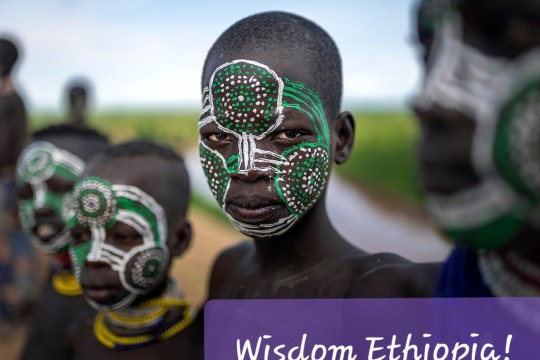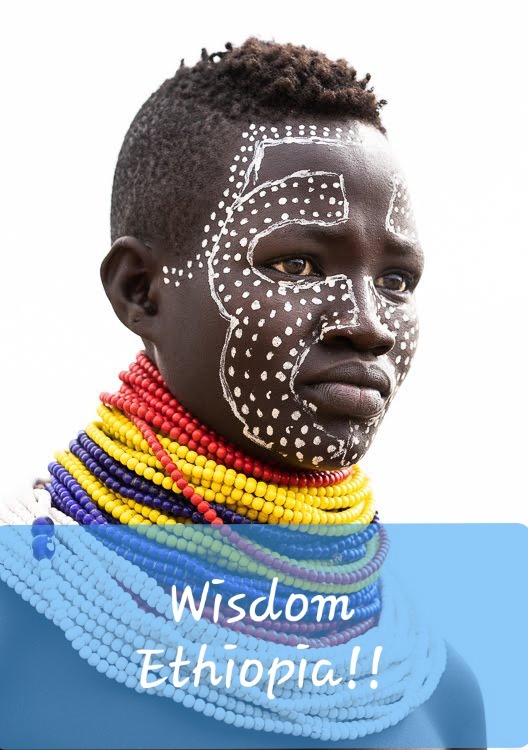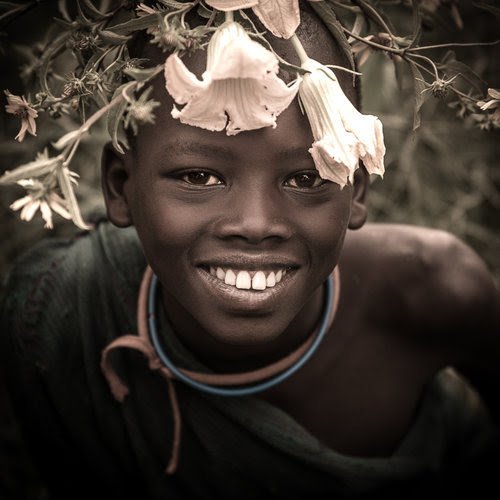#nyangatom tribe
Explore tagged Tumblr posts
Photo

Young woman of the Nyangatom tribe, with traditional necklaces and hair covered with ochre and animal fat, Omo Valley, Ethiopia, March 2015.
Photographer: Eric Baccega
1 note
·
View note
Video
Nyangatom Family da Roberto Pazzi Tramite Flickr: Nyangatom family (Ethiopia). Photos available as PRINTS: roberto-pazzi.my-online.store/category/openeditionprints Photos available as collectible NFTs: opensea.io/accounts/RobertoPazzi Join my EXPEDITIONS! Info: robertopazziphoto.com/expeditions.html Website: robertopazziphoto.com/ Instagram: Roberto_Pazzi_Photo Facebook: Roberto Pazzi Photography
#portrait#people#family#hut#outdoors#tribe#Nyangatom#omo#valley#women#child#culture#africa#photography#place#village#necklaces#african#ethnicity#ethiopia#full#length#three#persons#nikon#reportage
3 notes
·
View notes
Text
Omo Valley photography Tour with Wisdom Ethiopia !
The extraordinarily diverse country of Ethiopia is home to some of the last true tribal people in all of Africa and has become famous for its extraordinary tribal photography potential. In the south west of Ethiopia lies the Omo Valley, a living anthropological treasure of spectacular people including the Hamer, Suri, Dassanech, Karo, Nyangatom and Mursi tribes. In the face of their ever changing world, each of these tribes is struggling to maintain their traditions of dress, dance, decoration and way of life. A visit to Ethiopia’s Omo Valley is to visit a world that is fast disappearing. A world of beauty, diversity and strength that has vanished from great tracts of Africa.
Collectively the Omo Valley people draw inspiration from the wilderness that surrounds them and this is reflected in their varying styles of traditional dress.

1 note
·
View note
Photo










Rendille tribe Kenya
Samburu tribe Kenya
young Samburu Shepherd Kenya
Wodaabe tribe Niger
Turkana girl Kenya
Acho in Ethiopia
A Tuareg camel herder northern Mali
Nyangatom villager Southern Ethiopia
the Hamar tribe southern Ethiopia
the Pokot tribe Kenya
by John Kenny
9 notes
·
View notes
Photo

. . The women of the Nyangatom tribe are easily recognizable by their large colorful necklaces. Although there are other tribes that wear similar ones none are as big. In the past these necklaces were made of animal bones or wood and were of a more natural brown color. These days colorful plastic is taking over as the preferred choice for most women. Scars on the face and body is also common amongst the Nyangatom women who view this practice as a sign of beauty and strength. The Nyangatom, originally from Sudan, are not known for their friendliness and are in fact feared by many other tribes. . . Photo taken by 😀@spencer_travel_photographer😀 Follow me around the world and see the world as I see it..🌍 . . Remember to tag your images #spencer_travel_feature For a chance to be featured 🏆 Please note that submitted images may be edited. . . . . . . . . . . . . . #ethiopia #tribe #tribal #tribalart #tribalbraids #portrait_perfection #portraitpage #portraitphotography #africa #africanqueen #africanstyle #scarification #africanfashion #africaamazing #ig_captures #omovalley #omovalleytribes #nationalgeographic #nationalgeographictravel #roughguides (at Ethiopia) https://www.instagram.com/p/B0vAmgNBQ3d/?igshid=1vvoeuq303q3h
#spencer_travel_feature#ethiopia#tribe#tribal#tribalart#tribalbraids#portrait_perfection#portraitpage#portraitphotography#africa#africanqueen#africanstyle#scarification#africanfashion#africaamazing#ig_captures#omovalley#omovalleytribes#nationalgeographic#nationalgeographictravel#roughguides
2 notes
·
View notes
Photo

Los Nyangatom, Etiopía
21 notes
·
View notes
Photo

A woman of the Nyangatom Tribe, that was clearly very happy to see me return to her village. Omo Valley, Ethiopia. Photo © Konstantino Hatzisarros 2018
14 notes
·
View notes
Text
Game Boundary
Yanomami tribe
https://www.survivalinternational.org/tribes/yanomami



Bacaja Tribe Village, Brazil

Some tribes don’t have a physical wall or any form of boundary and decide for a more open space. For a game and having the player easily understand the boundaries of their environment, I think a wall of some kind, whether that be a wall of thick trees or a constructed wood wall better represents the boundary better to the player.

This is from an African Tribe but they have a constructed wooden wall around the compound of structures to act as protection from animals and other hostile things. For a game, I think a physical wall the player can see, it would be far more obvious and understanding to have a physical boundary that stops the player from leaving the playable area.
This tribe also has these walls inside the outer wall, offering even more protection to the more important aspects of the tribe, this could also act as a way to store animals that they use for food.

This is one is also of a African Tribe located in Uganda but they took a different approach that I think is quite interesting looking, and if I find it interesting maybe that’ll translate for the player finding it interesting. Anyway, I can’t find any solid reason they constructed it that way but it looks as if it is more private, like small estates encloses, maybe each family has their own encloses space?

https://www.jaynemclean.com/blog/omo-valley-photo-tours-nyangatom-tribe-ethiopia
write what i like

In media, tribes have these high walls of wooden, spiked logs. I think these demonstrate to the viewer a primitive technology stage and the viewer can easily get a understanding of what “it” is.
King Kong: Skull Island

King Kong (2005) the tribes’ wall is constructed around a stone ruin, this stone wall can be seen to have many wooden structures on it to help with support and traversal. Though I do like the idea of having an even older ruin than one that was there before the tribe was there, I prefer the look of the wooded, spiked logs looks. I think this has a more traditional feel then with the stone ruins, as the next question is, who built this stone structure?

0 notes
Link
#ethiopia #tribes #village #omoriver #turmi #Jinka #omovalley
Dear friends
Thank you very much for contacting me choosing my tribal contact experience services yes I am available and very happy to give you my reputed services in the best of ways to suit your interests, You have a great time to explore and learn more a way of life through the remote villages of the Omo River Valley Tribes, camping with Tribes I highly suggest as well.
This is an extraordinary opportunity to meet some of the more remote ethnic groups of the fascinatingly diverse areas surrounding the Omo River in South West Ethiopia. While the Omo Valley is an area which has been on the “tourist radar” for several years, the vast majority of visitors to the region find themselves unable to escape the “4WD circuit” which has arisen.
This comprehensive itinerary visits some of the region’s better known tribes but also spends a day walking through the Buska Mountains following a remote village trail and camping for two nights in the wild close to the villages of Buska and Kufur. Be warned, this is not an easy journey at times and there will be some basic conditions; it will surely be a journey to challenge the senses.
Whilst in this fascinating region we aim to learn about the varied ethnic groups who inhabit the region - from the Mursi, renowned for their lip-plates, the Konso famous for their terraced farming to the Hamer famous for their bull jumping coming of age ceremony. This is a unique itinerary in an unforgettable part of the world.
Highlights:
Meeting (amongst many) the Dorze, Ari, Bana, Hamer, Karo Surma, Nyangatom Dasenech tribes people of the delta near Lake Turkana Mursi peoples.
Experiencing the weekly markets at Key Afer, Dimeka and Turmi
Walking through the remote Buska Mountains
Camping wild next to tribal villages
Exploring the natural wonders of the Great African Rift Valley
2 notes
·
View notes
Text
OMO VALLEY TOURS AND THE SOUTH
The Omo Valley tours of Ethiopia is part of the Southern Nations and Nationalities Peoples Area (SNNPR) and is a remarkably isolated area of the country, famous for its native people or tribes. There are close to 40 tribes in the zone, many of who are staying as they have existed for millennia. It is these groups that we have come to photograph-- in their villages, the bush, roadside, and local markets.
The Danakil desert (accessed from Mekele) is the hottest place on Earth and we intend to visit Ahmedila for its ancient trade in salt using camel caravans and the Dallol volcano which manifests itself through geothermal activity at the surface creating bizarre solfataras, small geysers and bright yellow and green sulphuric acid pools on the surface. At dawn and dusk, when it is cooler, this is a photographers paradise.
The Lower Omo Valley is a spectacularly gorgeous area with varied ecosystems consisting of grasslands, volcanic outcrops, and one of the few staying 'immaculate' riverine forests in semi-arid Africa which sustains a wide array of wild animals. he Bodi (Me' en), Daasanach, Kara (or Karo), Kwegu (or Muguji), Mursi and also Nyangatom live along the Omo and depend on it for their resources, having actually created complex socio-economic and ecological methods delicately adjusted to the severe and usually unforeseeable conditions of the area's semi-arid environment.

The yearly flooding of the Omo River feeds the rich biodiversity of the area and also guarantees the food security of the people particularly as rainfall is reduced as well as irregular. They depend on it to practice 'flood resort farming' utilizing the abundant silt left along with the river financial institutions by the gradually receding waters. They additionally exercise rainfed, changing cultivation growing sorghum, maize, and also beans on the flood plains. Some tribes, specifically the Kwegu, quest video game, and also fish. Cattle, goats, and also sheep are vital to many tribes' livelihood producing blood, milk, meat, and hides. Cattle are very valued and utilized in repayment for the bridewealth. They are an essential protection against starvation when rains as well as plants fall short. In specific seasons families travel to temporary camps to give new grazing for herds, making it through on milk and blood from their livestock. The Bodi sing rhymes to favorite livestock.
0 notes
Video
The Village da Roberto Pazzi Tramite Flickr: Nyangatom women (Ethiopia). Photos available as PRINTS: roberto-pazzi.my-online.store/category/openeditionprints Photos available as collectible NFTs: opensea.io/accounts/RobertoPazzi Join my EXPEDITIONS! Info: robertopazziphoto.com/expeditions.html Website: robertopazziphoto.com/ Instagram: Roberto_Pazzi_Photo Facebook: Roberto Pazzi Photography
#portrait#people#ethnic#staged#hut#ourdoors#tribe#nyangatom#omo#valley#women#babies#full#length#culture#africa#photography#place#african#ethnicity#ethiopia#tribal#color#mothers#sons#children#looking#camera#reportage#nikon
3 notes
·
View notes
Text
We are here for your photography expedition to omo Valley Ethiopia. Travel unlike others!!
How you will travel with us ??
Real connections, real experiences and real life changing moments - helping others along the way and supporting local communities when and where possible. Being a responsible tourist and showing respect and etiquette to the people we meet along the way.
Ethiopia is such a unique country, with traditions, cultures, tribes and landscapes like no where else in the world! The Omo Valley is such an amazing experience and visiting this awesome part of this incredible country has unexpectedly changed my perspective, thoughts and future!
The Omo Valley tribes are incredible in so many ways - different traditions, different lifestyles, different cultural beliefs and challenges. There are so many diverse tribes in such a small area. Most of the tribes can be seen/visited on a Southern Ethiopia Omo Valley tour which is the most popular tourist route (including Mursi tribe, Hamer tribe, Ari tribe, Nyangatom tribe, Arbore tribe, Dassenech tribe and more).Although this journey is certainly rewarded with incredibly friendly and welcoming people that love having visitors and are amazing to photograph!





0 notes
Photo

Nyangatom, Omo tribe , Ethiopia
by Mario Gerth
#Mario Gerth#Omo#tribal#tribe#traditional#ethiopia#ethnic#aroundtheworld#fineart#photography#Black and White#humans#beauty#africa
52 notes
·
View notes
Photo

. . A young woman from the Nyangatom tribe. Even though most women now ware colorful plastic necklaces this lady has a traditional one made from animal bone. . . Photo taken by 😀@spencer_travel_photographer😀 Follow me around the world and see the world as I see it..🌍 . . Remember to tag your images #spencer_travel_feature For a chance to be featured 🏆 Please note that submitted images may be edited. . . . . . . . . . . . . #people_and_world #africa #african #african_portraits #africatotheworld #womenempowerment #womenpower #womensrights #tribes #tribales #tribaljewellery #igtravel #igdaily #instapic #instadaily #instaphoto #instatravel #ig_captures #ig_shutterbugs (at Ethiopia) https://www.instagram.com/p/BxZK5VEhF1Q/?utm_source=ig_tumblr_share&igshid=uo9bm1qhiqck
#spencer_travel_feature#people_and_world#africa#african#african_portraits#africatotheworld#womenempowerment#womenpower#womensrights#tribes#tribales#tribaljewellery#igtravel#igdaily#instapic#instadaily#instaphoto#instatravel#ig_captures#ig_shutterbugs
0 notes



